The Baltimore Orioles are back and busy nesting already.The male’s song floats over trees and shrubberies filling the spring sky with a glorious clear tone unlike any other songbirds trills or tweets. Both the male and female sing and when they are annoyed they kvetch with a rattling, scratchy cry.
-
-
First Spring 2012 Sighting of Male Baltimore Oriole
Male Baltimore Oriole high up in a Honey Locust tree on May 7, 2012.
-
Female Baltimore Oriole 2012
The female Baltimore Oriole is a frequent visitor to the Yellow-bellied Sapsuckers ‘wells’ in a Hawthorn tree. The sweet sap must offer an energy boost for all the efforts she makes weaving her intricate nest while mostly upside down.
Lucky for me . . . the Baltimore Orioles continue to choose our native Black Cherry tree in the north field just in view from where I am typing. She has quite a bit more material to weave into her nest seen in the upper left of the photograph above.
A couple of years ago, I chanced to see the female Baltimore Oriole stripping dry plant stems for nesting material.
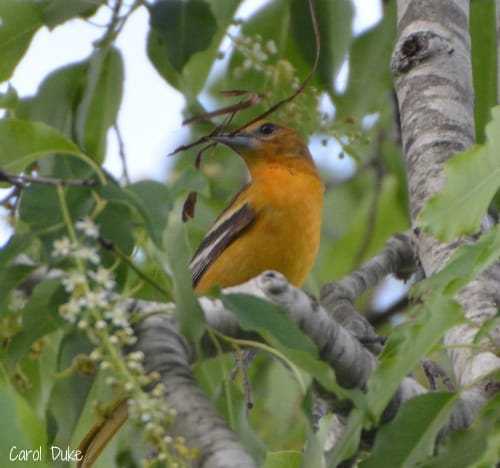
This female Baltimore Oriole was very striking and with very little black-brown on her head. Perhaps she is a very young adult. Over time the females can become as bright orange as the males.
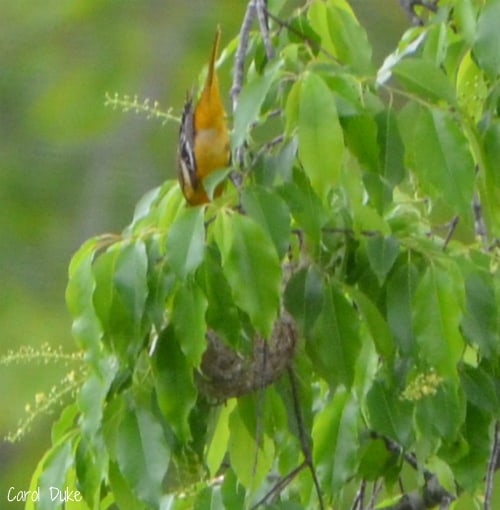
I think the Baltimore Oriole couple very clever to choose a site with fruit just within reach. They have been choosing a wispy branch on the north side of the Black Cherry tree for years now.
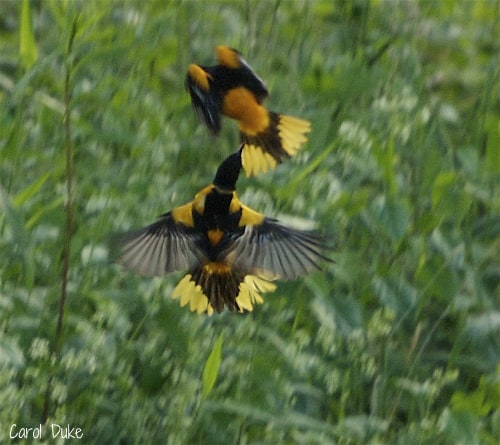
I caught a glimpse of a jousting match between two male Baltimore Orioles the other day but did not capture their fight in flight as I did in the above photograph taken in 2009. The males will defend their territory and are often checking in on the progress of their mates weaving. When the young are born, they are devoted fathers.
http://flowerhillfarm.blogspot.com/
Carol Duke
Carol Duke is an artist and farmer who has worked with the land on a Western Massachusetts hillside for over thirty years. During this time her land has evolved into a diverse wildlife habitat. Carol features the flora and fauna that live and visit her farm on her blog http://flowerhillfarm.blogspot.com/ As vital wildlife habitats are destroyed daily, Carol hopes to inspire others to garden for wildlife, while becoming activists for wild places the world over. Her nature photography has appeared in magazines, books and newspapers.
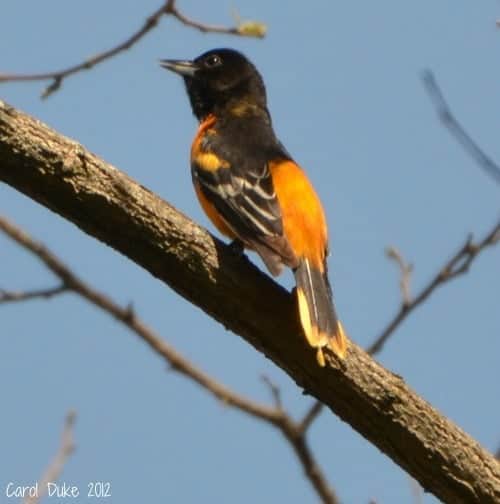
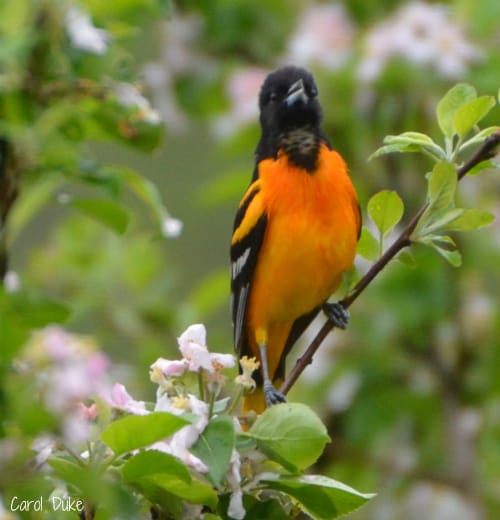
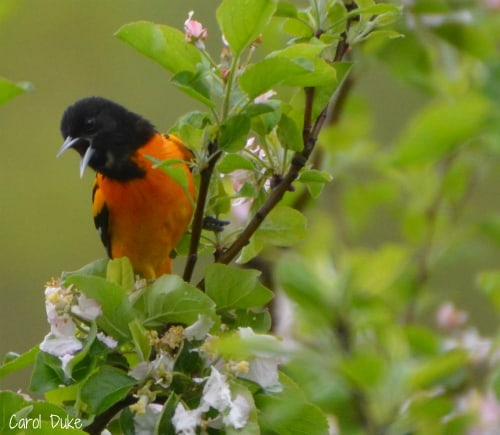
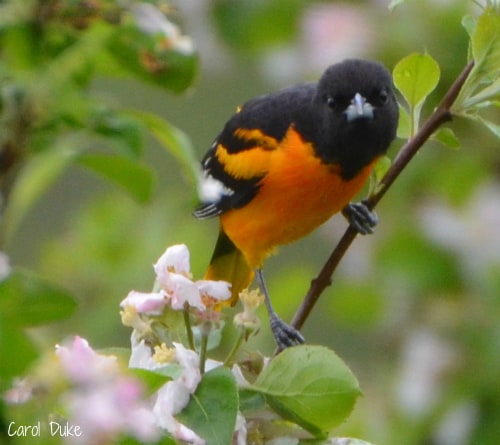



Leave a Reply